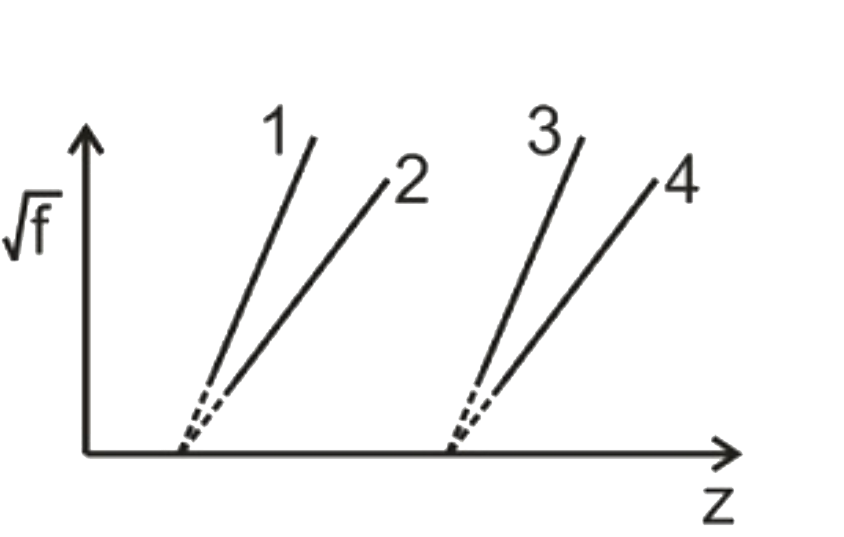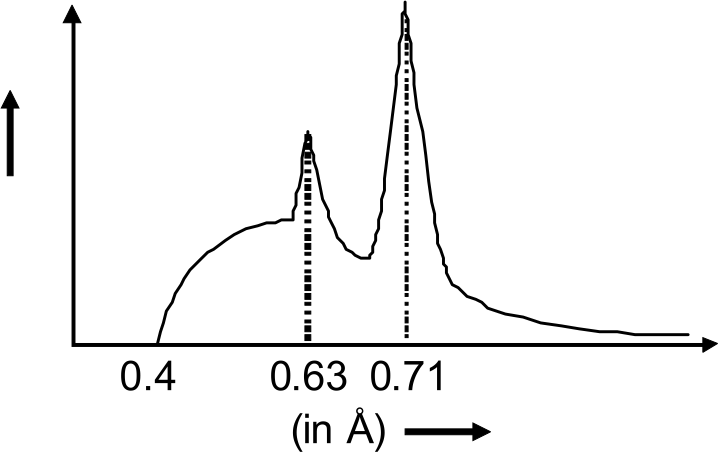If f1=f2 and f3 are the frequencies of corresponding Kα,Kβ and Lα X-rays of an element, then :-
f1=f2=f3
f1−f2=f3
f2=f1+f3
f22=f1f3
The correct Answer is:C
For kα emmision
⇒ transition ⇒ L shell to k - shell
For kβ emission
⇒ tranisition ⇒ M shell to k-shell
For Lα emmision
=⇒ transition ⇒ M shell to L-shell
EM−EK=(EM−EL)+(EL−EK)
⇒hf2=hf3+hf1⇒f2=f1+f3
Topper's Solved these Questions
Similar Questions
Obtain a relation between the frequencies of K∞Kβ and Lα line for a target metrial .
View SolutionThe energy of an element with a vacancy in K-shell is 35.2 V, in L-shell is 5.25 keV and in M-shell is 0.55 keV higher than the energy of the atom of with no vacancy. Find the frequency of Kα,KβandLα X-rays of that element.
View Solution
Knowledge Check
In X-ray experiment Kα,Kβ denotes
ACharacteristicBContinuous wavelengthCα,β− emissions respectivelyDNone of theseIf λKα,λKβ and λLα are the wavelengths of Kα,Kβ and Lα, lines respectively , then
AλKβ=λKαλLαλKα+λLαBλLα=λKαλKβλKα+λKβCλLα=λKαλKβλKβ+λKαDnone of theseIf the frequency of Kα,Kβ and Lα , X-ray lines of a substance are vKα,vKβ, and vLβ
AvKα+vKβ=vLαBvKα−vKβ=vLαCvKα+vLα=vKβDnone of these
The graph given below, shows the variation of √f vs z for characteristics X- rays. Lines 1,2,3 and 4 shown in the graph corresponds to any one of Kα,Kβ,Lα or Lα emission, then Lβ is represented by ( f = frequency, z = Atomic number)

View SolutionFigure shows intensity versus wavelength graph of X-rays coming from coolidge-tube with molybdenum as target element :

The two peaks shown in graph correspond to Kα and Kβ X-rays
Wavelength of Lα X-rays from Coolidge tube will be (approximatly)
View SolutionIf α,β(α,β) are the points of discontinuity of the function f(f(x)), where f(x)=11−x, then the set of values of a foe which the points (α,β) and (a,a2) lie on the same side of the line x+2y−3=0 , is
View SolutionLet ∫βαf(α+β−x)f(x)+f(α+β−x)dx=4 then
View SolutionLet λα',λβ,andλ'α denote the wavelength of the X-ray of the Kα,Kβ,andLα lines in the characteristic X-rays for a metal. Then.
View Solution